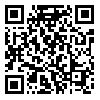BibTeX | RIS | EndNote | Medlars | ProCite | Reference Manager | RefWorks
Send citation to:
URL: http://irj.uswr.ac.ir/article-1-439-en.html

 , Fereshteh Narenji *
, Fereshteh Narenji * 
 2, Masoumeh Pourmohsen2
2, Masoumeh Pourmohsen2 
 , Khoshe Khalrghinejad2
, Khoshe Khalrghinejad2 
 , Nahid Mehran2
, Nahid Mehran2 

2- Shahid Behshti University of Medical Science, Tehran, Iran.
Cerebral Palsy is the most common chronic motor disorder of childhood, that affecting approximately 3 infants per 1000 live-births. The risk of brain injuries that potentially cause Cerebral Palsy has amplified with increasing in survival rates for preterm infants. In addition Cerebral Palsy has a huge economic impact, to immeasurable health, social, and psychological problems that affected children and their families suffer. Cerebral Palsy, among 18 common congenital disorders, has the highest lifetime costs per new case. Thus, efforts to prevent its occurrence, minimize the morbidity, and improve the patient outcomes are important at both the individual and societal levels. In each trimester, different patterns of brain damage or abnormal insults can represent times and etiology of injuries. Knowledge of the etiology and pathogenesis of abnormal brain growth during antenatal, perinatal and neonatal damages can be helping us for prevention. Also Magnetic Resonance Imaging (MRI) studies of subjects with multiple forms of cerebral palsy reported significantly more overall abnormalities, malformations, and white matter damage but in this review study we discuss in what extent MRI is useful in detecting cerebral palsy pathogenesis.
Received: 2014/09/10 | Accepted: 2014/10/23 | Published: 2014/12/1
| Rights and permissions | |
 |
This work is licensed under a Creative Commons Attribution-NonCommercial 4.0 International License. |



